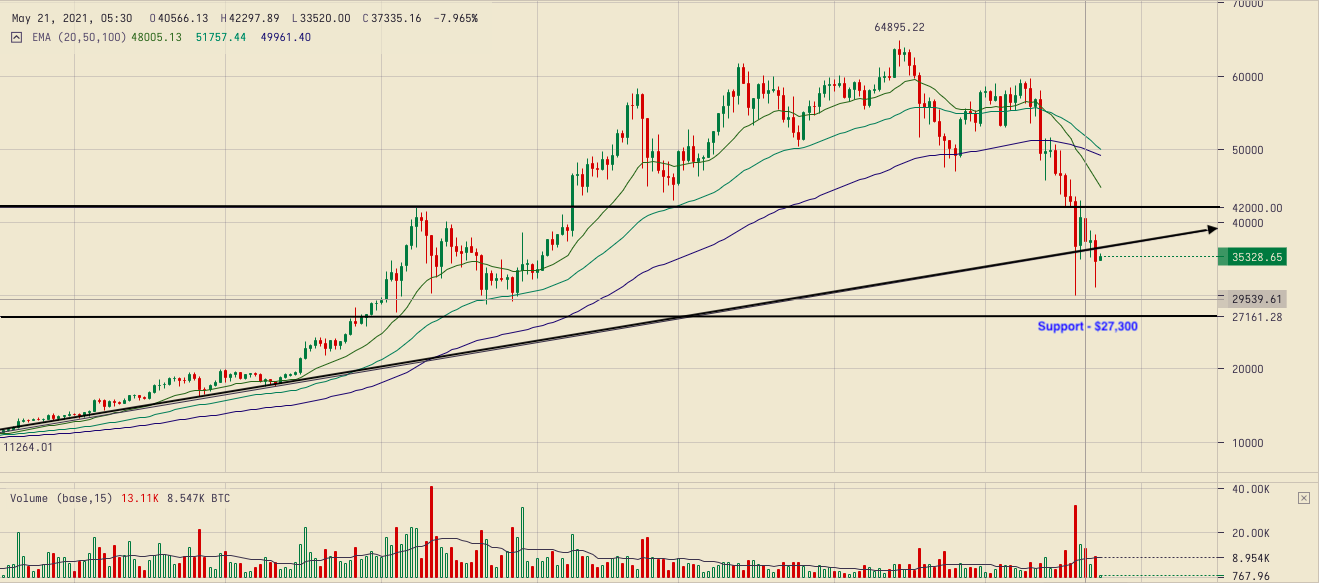Cryptocurrency
Almost. We have a process that we use to verify assets. Once verified, we create a coin description page like this. The world of crypto now contains many coins and tokens that we feel unable to verify https://comanimee.com/. In those situations, our Dexscan product lists them automatically by taking on-chain data for newly created smart contracts. We do not cover every chain, but at the time of writing we track the top 70 crypto chains, which means that we list more than 97% of all tokens.
Buying cryptocurrency doesn’t grant you ownership over anything except the token itself; it’s more like exchanging one form of currency for another. If the crypto loses its value, you won’t receive anything after the fact.
Aside from its low fees, Kraken Pro offers a customizable interface, catering to sophisticated traders looking for advanced trading features. With support for over 185 cryptocurrencies, Kraken’s wide selection of digital assets accommodates a diverse array of trading preferences and strategies.
TThe data at CoinMarketCap updates every few seconds, which means that it is possible to check in on the value of your investments and assets at any time and from anywhere in the world. We look forward to seeing you regularly!

Cryptocurrency market
The total crypto market volume over the last 24 hours is $148.18B, which makes a 22.57% decrease. The total volume in DeFi is currently $8.34B, 5.63% of the total crypto market 24-hour volume. The volume of all stable coins is now $135.8B, which is 91.64% of the total crypto market 24-hour volume.
Bitcoin’s source code repository on GitHub lists more than 750 contributors, with some of the key ones being Wladimir J. van der Laan, Marco Falke, Pieter Wuille, Gavin Andresen, Jonas Schnelli and others.
The two major changes are the introduction of the Merkelized Abstract Syntax Tree (MAST) and Schnorr Signature. MAST introduces a condition allowing the sender and recipient of a transaction to sign off on its settlement together. Schnorr Signature allows users to aggregate several signatures into one for a single transaction. This results in multi-signature transactions looking the same as regular transactions or more complex ones. By introducing this new address type, users can also save on transaction fees, as even complex transactions look like simple, single-signature ones.
Some examples of prominent cryptocurrencies that have undergone hard forks are the following: Bitcoin’s hard fork that resulted in Bitcoin Cash, Ethereum’s hard fork that resulted in Ethereum Classic.
On October 31, 2008, Nakamoto published Bitcoin’s whitepaper, which described in detail how a peer-to-peer, online currency could be implemented. They proposed to use a decentralized ledger of transactions packaged in batches (called “blocks”) and secured by cryptographic algorithms — the whole system would later be dubbed “blockchain.”
Cryptocurrency bitcoin price
Fifty bitcoin continued to enter circulation every block (created once every 10 minutes) until the first halving event took place in November 2012 (see below). Halvings refer to bitcoin’s issuance system, which was programmed into Bitcoin’s code by Satoshi Nakamoto. It essentially involves automatically halving the number of new BTC entering circulation every 210,000 blocks.
4. Energy Consumption: Mining requires a lot of electricity to power the specialized hardware, known as ASICs. Miners often set up operations in regions with cheap electricity to reduce costs and increase profitability.
The next Bitcoin mining event, known as the Bitcoin halving, is expected to occur around April 2028. The last halving took place in April 2024, reducing the block reward from 6.25 BTC to 3.125 BTC per block. This event is significant because it reduces the rate at which new Bitcoins are created, contributing to Bitcoin’s scarcity and potentially influencing its price. The next halving in 2028 will further reduce the reward to 1.5625 BTC per block.
You can securely store your Bitcoin in the custodial wallet on the KuCoin exchange without having to worry about managing your private keys. Other ways to store your BTC include using a self-custody wallet (on a web browser, mobile device, or desktop/laptop computer), a hardware wallet, a third-party crypto custody service, or a paper wallet.

Fifty bitcoin continued to enter circulation every block (created once every 10 minutes) until the first halving event took place in November 2012 (see below). Halvings refer to bitcoin’s issuance system, which was programmed into Bitcoin’s code by Satoshi Nakamoto. It essentially involves automatically halving the number of new BTC entering circulation every 210,000 blocks.
4. Energy Consumption: Mining requires a lot of electricity to power the specialized hardware, known as ASICs. Miners often set up operations in regions with cheap electricity to reduce costs and increase profitability.
Cryptocurrency regulation
In 2019, New Jersey enacted SB 2297, which “creat the New Jersey Blockchain Initiative Task Force to study whether State, county, and municipal governments can benefit from a transition to a Blockblockchain-based system for recordkeeping and service delivery.”
Cryptocurrency adoption rates are weakly correlated with regulatory restrictiveness. Even for countries with partial or general bans in place, adoption rates remain high, suggesting that bans are generally ineffective.
Cryptocurrency is encompassed in existing money transmission statutes. Ala. Code § 8-7A-2 defines monetary value as “A medium of exchange, including virtual or fiat currencies, whether or not redeemable in money,” and money transmission as “Selling or issuing payment instruments, stored value, or receiving money or monetary value for transmission.” Ala. Code § 8-7A-5 states that “A person may not engage in the business of money transmission” unless they are licensed.
The regulatory landscape for cryptocurrency in the U.S. is not well defined, and it evolves constantly. Different federal agencies treat digital assets differently based on their own assessments of crypto’s characteristics. Lawmakers may weigh in, too, and states can establish their own rules.
Arkansas has no cryptocurrency-specific laws, but cryptocurrency may be encompassed in existing money transmission statutes. AR Code § 23-55-102 defines monetary value as “a medium of exchange, whether or not redeemable in money,” and money transmission as “selling or issuing payment instruments, stored value, or receiving money or monetary value for transmission.” AR Code § 23-55-201 states that “A person may not engage in the business of money transmission…unless the person” is licensed. The Arkansas Securities Department has issued no-action letters to certain digital asset businesses, exempting them from licensing requirements. This includes Mythical, Inc. (June 22, 2020), which issued virtual currency in a video game, and River Financial, Inc. (May 21, 2020), which sold its own Bitcoin inventory.

